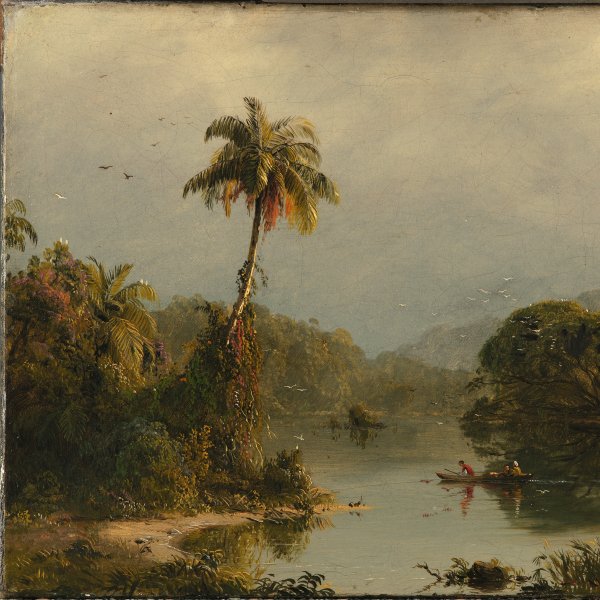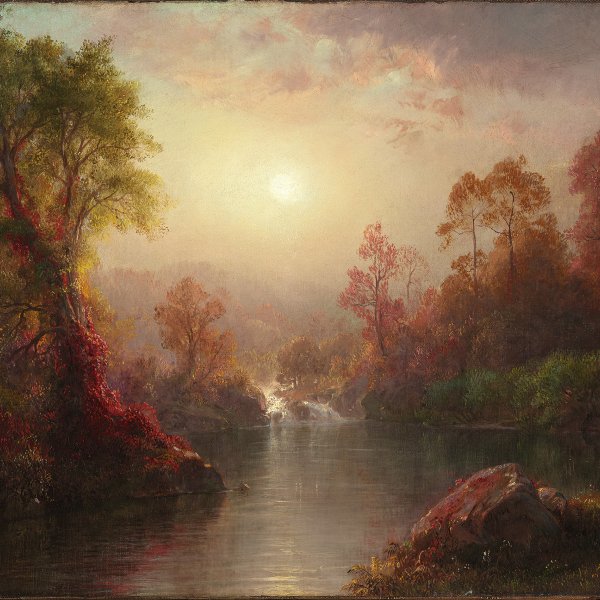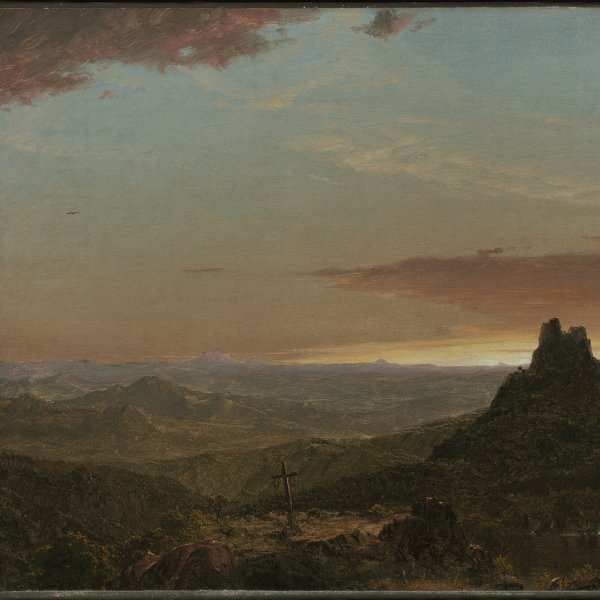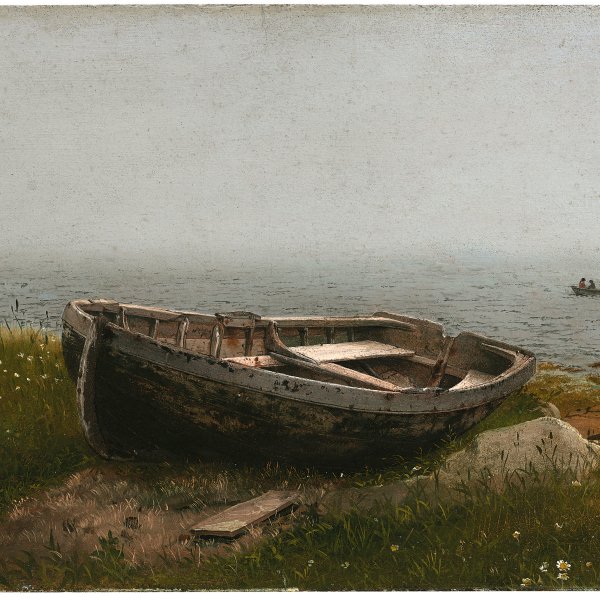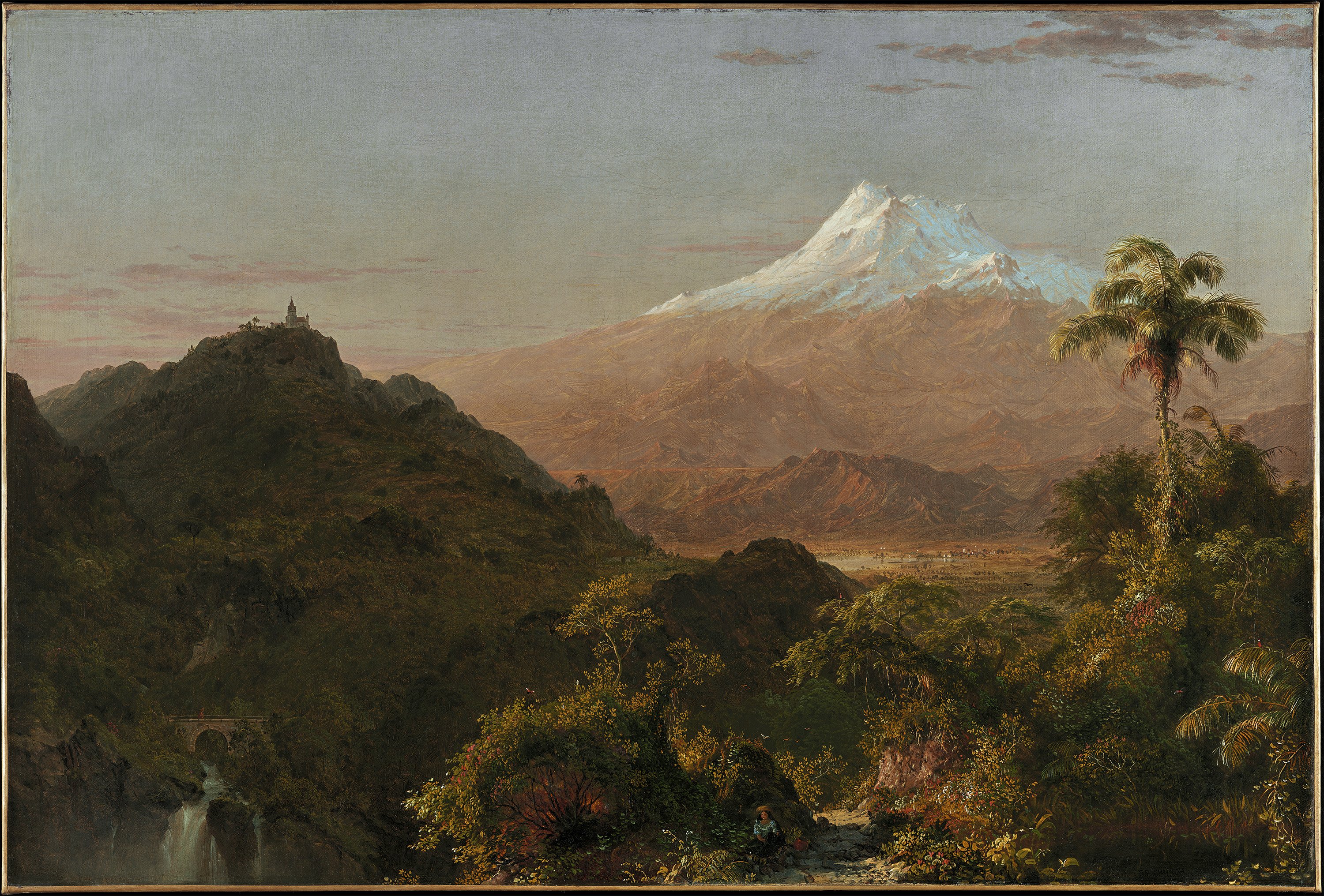South American Landscape
Frederic Edwin Church was one of the great American artists of the 19th century. A pupil of the celebrated American landscape painter Thomas Cole, Church’s study of the work of the English art theoretician John Ruskin and the German geographer and naturalist Alexander von Humboldt encouraged him to pursue his own direction in art in which science, art and religion were combined.
In 1853 Church embarked on an expedition to South America, following in Humboldt’s steps. During the trip he executed drawings and oil sketches of mountains, trees and plants in the manner of a true naturalist. He later made use of these works for the large-scale compositions that he produced in his studio.
Church painted South American Landscape in his New York studio two years after his return from Ecuador. It is an imaginary synthesis of different motifs that the artist had previously recorded in his drawings and oil sketches, including the palm tree and the Chimborazo volcano that makes its first appearance here in a finished composition. Such motifs, as well as the female figure in the foreground, the waterfall below a bridge on the left and the church on the hillside, fit together awkwardly. Rather than any unifying perspective there is a superimposition of different ecosystems, each executed from a different viewpoint. Most striking, however, is the astonishing and minute detail with which the tiniest details are painted, a characteristic of Church’s work that brought him great fame during his own lifetime.
JAL
During 1856 and early 1857 Church was much preoccupied with his work on his large canvas Niagara (1857; Corcoran Gallery of Art). Simultaneously he planned his second expedition to South America, and painted a succession of fine tropical pictures including In the Tropics (1856; Virginia Museum of Fine Arts, Richmond), View of Cotopaxi (1857; Art Institute of Chicago), and South American Landscape. These works express his anticipation of the forthcoming travels and the shift of his interest toward more rugged scenery and emotional presentation. He experimented with compositional motifs to achieve these effects in South American Landscape, where the right foreground is taken up by a wedge of dense vegetation, balanced at the left and slightly further back by the dark mass of a hill topped by a domed church. From there, the viewer's eye leaps back to the snow-capped Andean peak in the distance. The artist, in other words, has eliminated a clear middle ground; dispensing with the gradual steps from foreground to distance, he creates a more dramatic picture. He was moving toward his formal solutions of the panoramic Heart of the Andes (1859; MMA), which was seen in a single-work exhibition and accompanied by published guidebook that led the viewer step-by-step through the pictured landscape. Already in the Thyssen picture, however, he is striving to achieve similar effect, for which he departed from traditional compositional formula to recreate the experience of being in the Andes. Church invites the viewer to identify with the female figure who has stopped by the roadside in the centre of South American Landscape; like her, we will soon be on our way, walking down the visible path and then disappearing into the vegetation to get to the mountain beyond.
Church crossed into Ecuador from Colombia on 25 August 1853, when he encountered scenery he described in his own words as "a view of such unparalleled magnificence [...] that I must pronounce it one of the great wonders of Nature [...] My ideal of the Cordilleras is realized." For days afterward a series of immense "snow peaks" were constantly in view. Chimborazo was one, declared by Humboldt to be the highest and most noble of all. Its distinctive profile, which continued to fascinate Church, makes an early appearance in the distance of South American Landscape.
Katherine E. Manthorne
Emotions through art
This artwork is part of a study we conducted to analyze people's emotional responses when observing 125 pieces from the museum.





